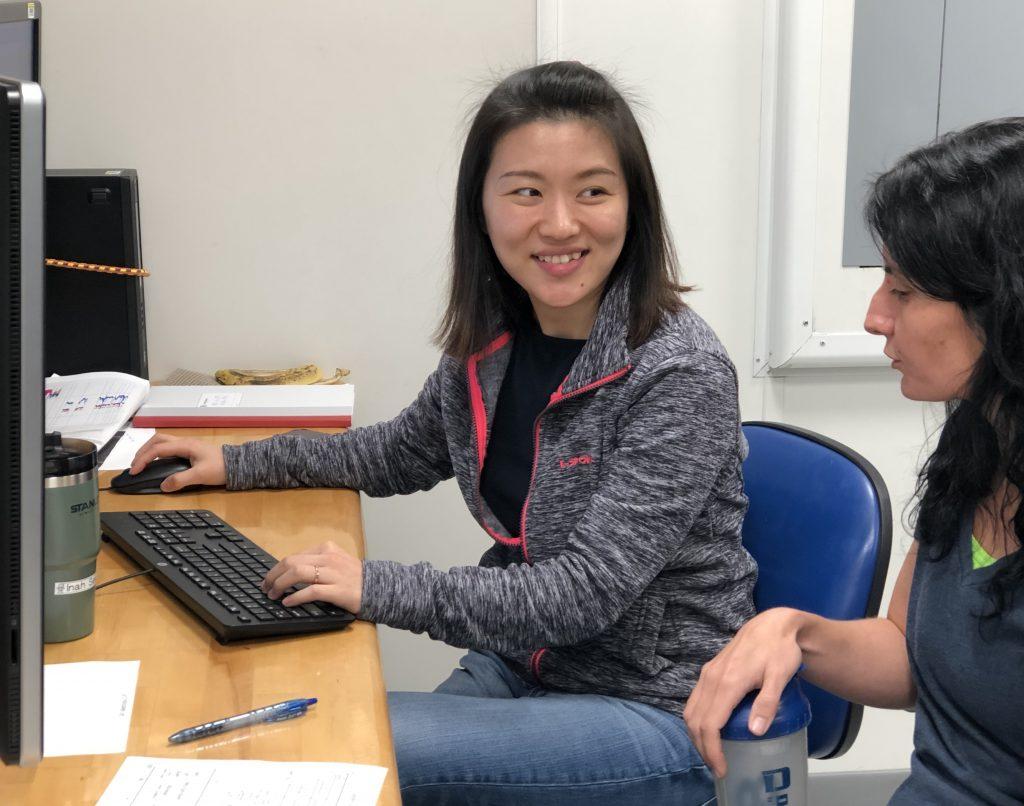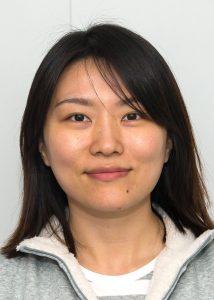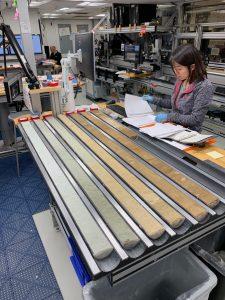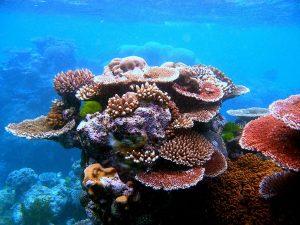
Career Spotlight: Sedimentologist Inah Seo

Inah Seo Interview
Please describe your job duties while on the JR. What will you be doing on a daily basis?
-
-
-
-
-
-
-
-
- I give a name to sediment based on its basic characteristics. I examine and describe the color, texture, grain size, sedimentary structure, etc. Sometimes I use microscope to see what is hidden to the naked eye.
-
-
-
-
-
-
-
Describe one instrument or tool that is essential for you to do your job? Or a piece of equipment on the JR that is useful and why – what does it do?
-
-
-
-
-
-
-
-
- The core splitter and scraper. Facing a fresh-cut core is the most fascinating job given to core describers. The second fun part is scraping its surface, making small features in the core more visible.
-
-
-
-
-
-
-
Why is your work (or research) important? What question are you trying to answer or how does your work/research help assist/advance scientific knowledge?
-
-
-
-
-
-
-
-
- Sediment description provides the basic information needed for other scientist to produce their data. To identify the major constituents of sediment and to know its depositional environment should be done first in order to pick the samples of interest for further analyses.
-
-
-
-
-
-
-
Why the ocean? What made you choose a career at sea or career that involves the ocean?
- I was not an ocean person, but I have always been interested in the natural history of the Earth and geology. The sedimentology class I took in undergrad introduced me to the world of paleoclimate and paleoceanography.
What are you most excited about for this expedition and/or being on the JR?

- Just to be an IODP scientist! It is worth two months on the ship. I am excited to work with great scientists in paleoceanography outside Korea.
What are three things you think are needed for a successful expedition at sea? And Why!
- To be excited about being on the ship as a scientist at the early period, to be on the track of regular life during the expedition, and to find fun things to do on the ship (not to get bored when off shift).
If you could answer one question about our Earth – what would it be and why?
- Is there the global climate change going on? Yes, because it has never stopped.
When did you know you wanted to pursue a career in science or an ocean science career?
- When I was finishing my master thesis I was so exhausted, I decided to travel Europe by myself after graduation. On the way back home, I just thought, that’s it. I got excited about starting a new PhD theme with an ocean focus.
What do you personally hope to gain or experience while on EXP383?
- To be inspired from and working with other scientists in various fields. It is amazing to see how different types of data are put together. There is always something I cannot see but other can see.
What is your favorite sea creature and why?
- Coral- It is not in my country and when I can see it, it reminds me of happy memories from when I was in Hawaii.

What message do you have for anyone considering a career at sea or a career involving the ocean sciences?
- Do not hesitate to be an ocean nerd! There are so many nerdy and funny people here and you are not alone.
What do you do back home when not on the JR?
- Taking care of plants, going to the gym, and doing some small things like cleaning, laundry. Then having very long phone call with my husband, staying in the other city in the weekdays. I enjoy telling him every small thing that happened in the day.
Do you get sea sick? If yes or sometimes, please also select the other tab and describe how you cope with it.
- Sometimes. In most cases it only lasts one or two days, so I just have soup for a meal and sleep.
The need for space comes in many forms. Which type of space, in general, is the most important to you?
- _X_Personal Space
- ___Creative Space
- ___Outdoor Space
- ___Emotional Space
- ___Physical Space
- ___Spiritual or Meditative
- ___Outer Space
- ___Community Space
- ___Quite Space
- ___Productive/Work Space
- ___Digital/Virtual Space
- ___Public Space
- ___Inner Space
- ___Other:
Why that type of space? What makes it important to you and will it be available while on the JR?
- In my daily life, I go to my office earlier than others and make coffee, and that is my most favorite moment in the day. Taking my personal time makes it more enjoyable to hang out with other people. On the JR, I sometimes wake up early, make a cup of coffee at the bridge deck, and enjoy the silence.